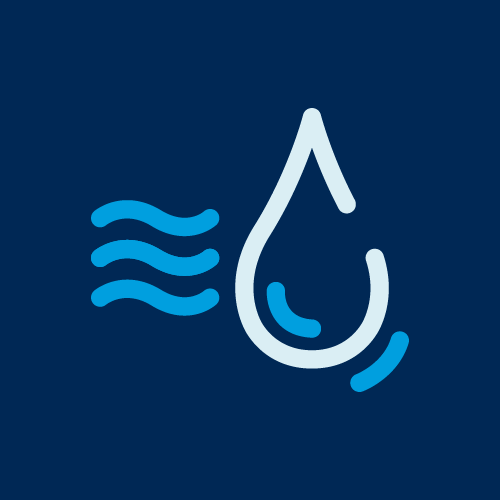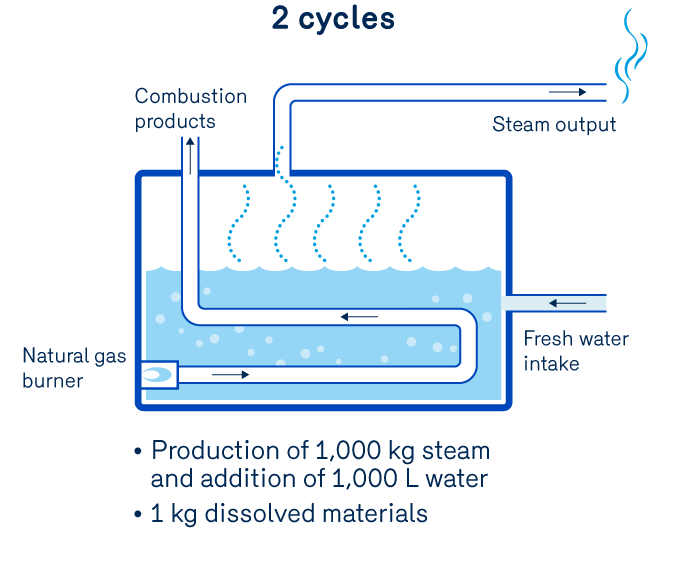Continue reading


Over the past several years, heating equipment have become more efficient and offer higher efficiency of up to 90%, or even 95%. However, this efficiency is linked to efficient heat exchange so that the heat from the combustion is efficiently transferred to the boiler water. Energy-efficient equipment is often more susceptible to fouling, which can significantly reduce their efficiency.
The deposits that can be created in boilers are formed primarily on the warmest surfaces of the equipment, that is, the heat exchange surfaces. The formation of these deposits acts as thermal insulation. The combustion energy is then transmitted less well and the equipment loses its efficiency. As a reference, a 1.27 mm (0.05 inches) layer of limescale can result in a 50% increase in gas consumption, as shown in the following graph.
This phenomenon is caused by naturally occurring minerals in a system’s makeup water. Since water from different sources do not contain the same amount of minerals, the same equipment may have different water treatment needs from one location to another. Minerals also influence the corrosivity of water. Water containing a large quantity of minerals will generally be less corrosive than very pure water. It is therefore important to characterize the water used and consult a water treatment expert before finalizing the design of a mechanical room or replacing a boiler powered by a different energy source, if applicable. Furthermore, the choice of water treatment varies depending on whether you use an open or closed system.
Open systems are characterized by a constant need for makeup water due to evaporation. The main equipment in open systems is steam boilers. When water is turned into steam, the minerals that it contains are left behind in the water. This process must therefore be controlled to prevent water from becoming extremely concentrated in minerals. This is called cycles of concentration (see diagram below). To avoid water that is too concentrated in minerals, part of the water is purged through a drain. This highly concentrated water is replaced by new water that will decrease the mineral concentration in the equipment.
These systems must also have with pretreatment equipment (very often a water softener) that removes the molecules from the water that can form limestone. Care must also be taken to maintain adequate cycles of concentration and to use an additive to keep the particles in solution in the water to avoid the formation of other types of deposits.
Above all, regular monitoring of the proper functioning of the pre-treatment equipment, water consumption and water quality should be done. Given that these systems consume large quantities of water on a daily basis, a few days of poor functioning can have a significant impact on their long-term energy consumption. Once fouled, the steam boiler will consume more gas or energy until the problem is identified and the boiler is cleaned. These cleanings are expensive and can cause premature wear of the heat transfer equipment.
Closed systems are characterized by the presence of a heat transfer fluid (often water or glycol) within a closed loop. These are usually hot, chilled, or mixed water loops. In theory, these systems require less monitoring because there is no water loss nor any need for water intake. However, it is critical to verify that the system is not consuming water or is only consuming little water. Consumption of water in a closed system can lead to over-consumption of energy (loss of hot water which is replaced by cold water), poor control of corrosion inhibitor concentration and an accumulation of deposits on heat exchange surfaces, as too many minerals are introduced into the system with the new water.
In all cases, it is imperative to hire a water treatment specialist to maintain the energy efficiency of the equipment and to keep your energy bill as low as possible. By accurately assessing the heating system’s needs based on its technical characteristics and operating environment, you will be able to optimize the long-term value of the equipment and ensure safe, reliable and economical steam or hot water production. An expert from Énergir’s DATECH team can also help you identify potential problems and find solutions to improve the energy performance of your facilities.
Understanding cycles of concentration |
The cycles of concentration measure the degree to which the dissolved-solid impurities in the makeup water are concentrated in the recirculating water of a cooling tower system.
Example conditions:
|



Martin Brière-Provencher
Advisor, Energy expertise
DATECH Group
Continue reading
© 2024, Énergir